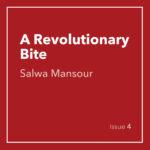Earlier this year, I attended Tariq Mehmood’s book launch for his new Young Adult novel, You’re Not Proper. The book’s vibrant cover art and Mehmood’s aim to introduce more diverse characters into the Young Adult genre encouraged me to add his book to my reading list. As someone with a special interest in Young Adult literature, reading You’re Not Proper stimulated thoughts, feelings and critiques that were only possible due to the book’s diverse characters and unique cultural representations.
The Young Adult genre has been dominated by Western authors and their respective portrayals of Western characters, settings, plots, and even culturally specific issues. These novels may tackle significant universal issues, as can be seen in The Thing About Jellyfish by Ali Benjamin (2015) in which the twelve-year-old protagonist struggles to come to terms with the death of her former best friend. Although Benjamin’s novel is beautifully written and delves deeply into the issues of grief, loss of a close friend, and even the biological struggles of early adolescence, it unfortunately falls into the pile of books in which universal issues are confined by Western texts. It is rare to come across multicultural books whose voices are presented as universal. Additionally, when such books do come to exist, they are placed in a category different from that of mainstream Young Adult literature and treated instead as honorable projects that deserve to be applauded – just not placed at the top of any library shelves. Betsy Bird, a blogger from School Library Journal, says, “The public outcry for more multicultural books has so far been more of a public whimper.” Mehmood’s book is a response to this larger problem. Indeed, you might hear him ask his students, “If we don’t write our own stories, who will?”
The book tackles both universal and culturally specific issues that are not often grappled with in its genre, such as the struggle with establishing a religious identity at a young age. However, it is significant to distinguish between a book written solely to promote diversity in the Young Adult genre, and one that does so through well-developed plot and characters. The significance of Mehmood’s You’re Not Proper stems more from the book’s diverse themes than it does from the storyline itself.
You’re Not Proper tackles issues of social, racial, cultural and religious identity through the seemingly separate but deeply intertwined stories of Kiran and Shamshad, two fourteen-year-old Pakistani girls living in a Northern English town called Boarhead, which is divided into two distinct parts. Kiran lives in Boarhead West, which is described as a typical safe, privileged, white-dominated, and ultimately boring place. She lives with her Christian mother and Westernized Pakistani Muslim father. Kiran is referred to as “Karen” by her family and classmates. On the other hand, Shamshad lives in Boarhead East, which is described as being much more cultural, with meat shops and vendors and a sense of communality in which all residents share the same language, religion, and traditions. We learn immediately that Shamshad wears a hijab and comes from a very religious family. The book follows the en vogue multiple perspective narration as we bounce back and forth between the points of view of Kiran and Shamshad, allowing the reader to witness an incident as seen through each teenager’s eyes.
The book begins with Kiran’s identity struggle as it reveals that she no longer identifies with her group of Islamophobic Christian friends. Kiran struggles to find her own identity, and decides to do so by becoming a Muslim – a “proper” Muslim, not a beer-drinking Muslim like her father. Shamshad, on the other hand, belongs to the clique of “Muslim bullies” and constantly expresses her obsessive hatred towards Kiran. Shamshad’s main issues seem to stem from home where her dysfunctional family is heavy with hostility, bickering, and secrets. Her bullying may be seen as a way for her to release the negativity she has stored inside of her from her home life. Reading an incident of Kiran being bullied leads the reader to immediately side with Kiran, but turning to the next chapter and delving into Shamshad’s darker thoughts and her personal justifications for her actions allow the bully to be more complex than just an evil character that is flatly malicious. For instance, in one of the chapters, the reader discovers that Shamshad’s hatred towards Kiran and her family is actually learned from her father. The book follows these two characters separately while revealing the different ways in which Kiran and Shamshad struggle with their identities and come to realize the complexity of what makes a “proper” identity.
It is significant to note that it is only in retrospective analysis that my observations regarding the characters come to mind. In the story itself, Mehmood settles for more minimalistic depictions of Kiran’s and Shamshad’s respective personalities. The book is mostly composed of simple, straightforward narration and dialogue. Perhaps these simplistic depictions shed light on the more complex themes at play, however, Kiran and Shamshad have the potential to be incredibly interesting protagonists, and the book itself has the potential to be more personally engaging. To demonstrate, the following excerpt is from the first chapter of the book, after Kiran has a fight with her “gang”:
My mobile buzzed. I tried to remember where I had put it. I saw it flashing in my jacket pocket. By the time I got to it, it stopped. I had had four missed calls from Jake, and one text. I read the text: Sorry for what they did to you.
Clenching the mobile tightly in my hand, I felt like throwing it against the wall. Instead, I replied to Jake: U?
Why is there more focus on the mechanical process of Kiran finding her cellphone than there is on why she wanted to throw her cellphone against the wall, and why she then decided to reply to Jake instead? Mehmood could have taken this opportunity to develop Kiran's character into a solid relatable one with complex thought processes.
One aspect of characterization that Mehmood seems to be particularly fond of is emphasizing on physical descriptions of characters in the book - descriptions that are almost solely reliant on a character’s weight. The physical descriptions that Mehmood provides for the characters do not quite illustrate for a reader what the characters might look like. Shamshad is introduced as “Shamshad Ali, a big, busty scarfie” in the very first chapter. Granted, this description is expressed through the Kiran’s teenage perspective, but that is the only physical description of Shamshad that is provided in the book. Weight is even mentioned in irrelevant instances. For instance, Donna is one of Kiran’s former Islamophobic friends, and her weight is mentioned at times that are irrelevant to the context, such as: “…Donna stood up, pointed at me with her fat finger” and “Donna glaring at me, her double chin wobbling.” Through such depictions, the reader does not gain into Donna. Mehmood even uses descriptions of a character’s weight for comic relief. Here, Kiran is describing one of her neighbors: “…the flab on Mrs Bulldog was doing a frenzied dance.” To mention flab doing a “frenzied dance,” Mehmood is depicting certain body types in a negative light. These kinds of descriptions may be harmful, especially in a book focused on two teenage girls.
On a more thematic level, these characters are not as shallow, and their struggles with identity are very relatable. For one, the book depicts the way in which Kiran was pressured to adopt the identity of her previous Islamophobic “gang.” At one point, Kiran was even forced to endure the pain of a cross being carved into her forehead by her friend Donna as a way to erase Islam from Kiran’s mind. Although she may not have agreed with their thoughts and actions, she went along with them for the sake of belonging. Kiran was a silent observer; she did not particularly participate in the bullying, but laughed along with her friends as they performed them.
This “false identity” mirrors a universal issue that many young adults struggle with when they are pressured to act in certain ways just to belong to a group of friends. However, Kiran’s identity struggle also is weighted with her struggle in making sense of Islam and integrating the religion into her daily life. As Kiran longs to identify herself with the Muslim community, she tells her father, “I want to be a proper Muslim…[p]roper something!” As we follow Kiran’s story, we come to realize how difficult it really is to grasp a “proper” identity, this intangible concept. Mehmood attempts to concretely portray the contradictions found in the characters’ identities, albeit mainly in reference to external identity markers. For example, Shamshad removes her veil and goes out in revealing clothing for a day to get a taste of freedom. After becoming veiled, Kiran wears a miniskirt to scare off unwanted guests in her house. And Kiran’s father drinks, eats pork and mocks religion but still attempts to learn more about Islam to help his daughter.
The story introduces significant issues such as suicide, sibling death, parental separation and rape. Although these issues are underdeveloped within the plotline, each of these issues has its own rightful place within the plot. There are some suspenseful and intense moments – especially near the end as Kiran’s and Shamshad’s family secrets slowly begin to unravel. However, the plot may have been hindered by the simplistic ways in which the relationships between the characters develop. Kiran and Shamshad start off as sworn enemies, and at the end of the book their issues are instantaneously resolved. At one point in the story, there is a hint of a turn in which the two girls seemed to be more understanding with one another. For instance, Shamshad feels guilty after posting a Facebook status in which she bullies Kiran and immediately removes the post and acknowledges her mistake. Mehmood does not elaborate much on her thought process during this scene, but the scene does have the potential to demonstrate the beginning of a shift in Shamshad’s attitude. Perhaps Mehmood could have expanded on that part of the story in which the relationship between the two girls was becoming more complex. The story’s ending seems too far-fetched and metaphorically significant (the two enemies join in sisterhood) – again, making the book more thematically significant, but not helping its plotline.
Despite its shortcomings,You’re Not Proper introduces a new type of Young Adult novel – one that includes diverse characters in original settings, and one that raises awareness on several important issues that have been close to absent from the genre, especially the specific struggle of young Arab Muslims who live abroad and must constantly find a middle ground between their religious beliefs and their foreign and intolerant surroundings. Mehmood’s book adds a voice of “color” to the publishing world that is sorely missing from the canon of Young Adult literature. You’re Not Proper stimulates thoughts and discussions that are absolutely crucial for its genre, and has paved the road for similar stories that tackle and introduce culturally diverse issues and characters. Nonetheless, this book can be seen as a stepping-stone towards building a greater body of diverse literature in which these issues can be presented through even more intricately woven plots and characters.
Salwa Mansour
Salwa Mansour is a student at the American University of Beirut. She is working towards becoming a children’s writer. She hopes to inspire people with her work.




